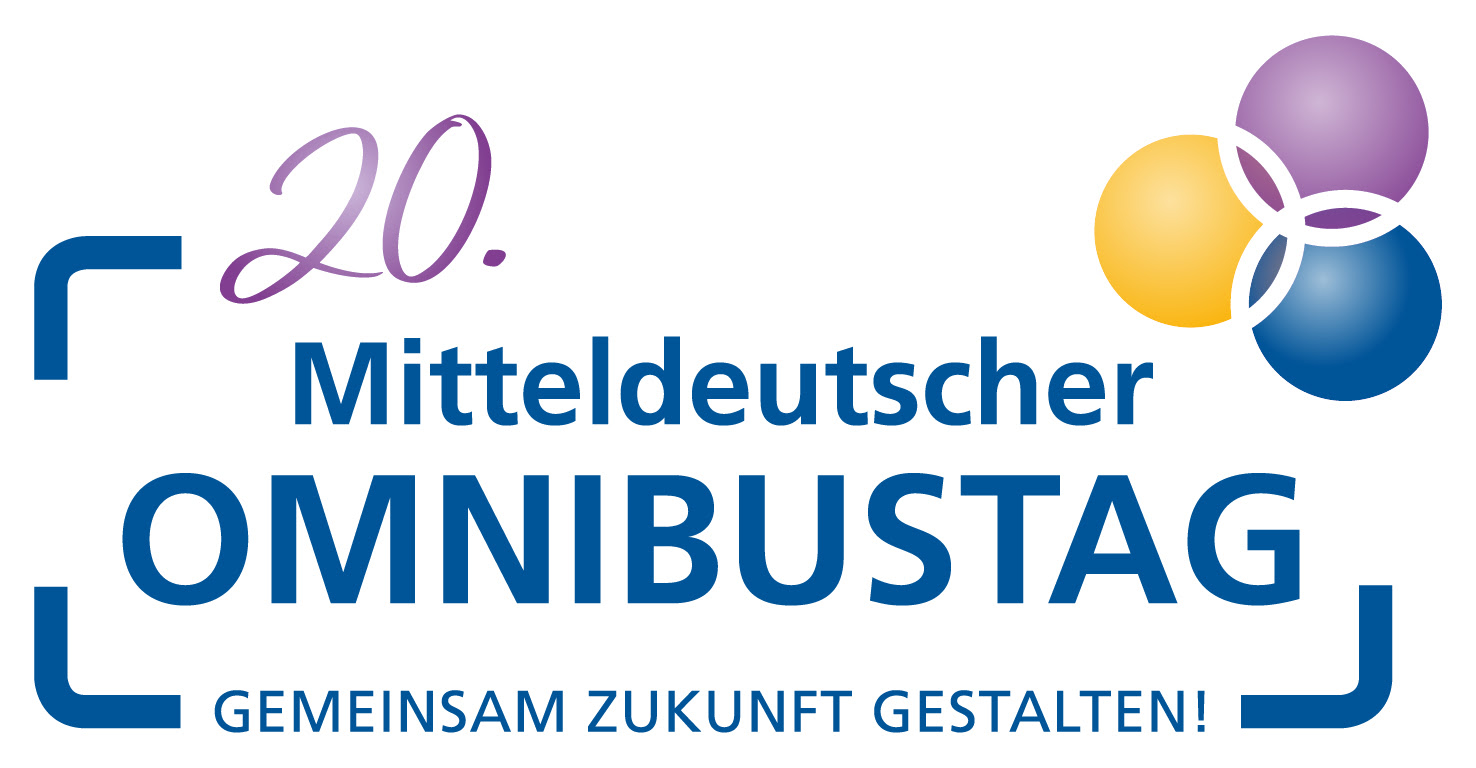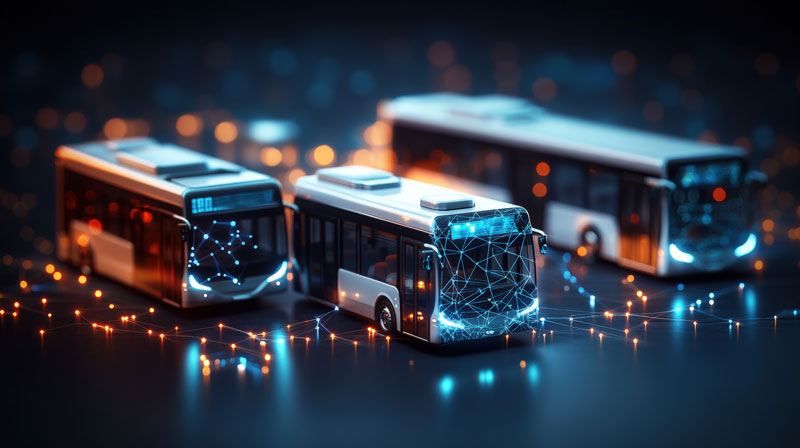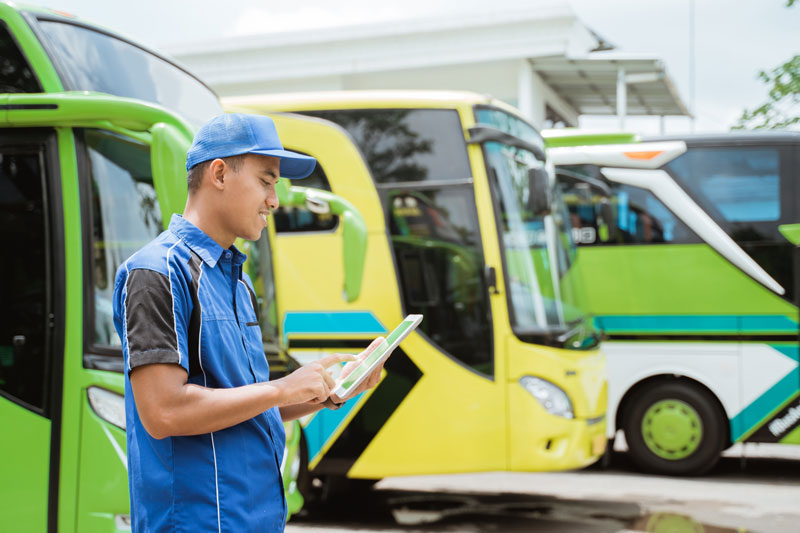 On 12–13 November 2025, the bus industry will celebrate a special anniversary: the Mitteldeutscher Omnibustag (German only) will take place for the 20th time. Once again, the venue will be the H+ Hotel Leipzig-Halle, where operators, manufacturers, service providers and industry representatives from across Germany will meet to exchange ideas about the future of the bus sector.
On 12–13 November 2025, the bus industry will celebrate a special anniversary: the Mitteldeutscher Omnibustag (German only) will take place for the 20th time. Once again, the venue will be the H+ Hotel Leipzig-Halle, where operators, manufacturers, service providers and industry representatives from across Germany will meet to exchange ideas about the future of the bus sector.
Under the established motto “Shaping the Future Together”, this anniversary event will focus on the key challenges facing the industry: driver shortages, digitalisation, new propulsion technologies and the public funding of mass transit. In addition to the conference with high-profile presentations and panel discussions, the accompanying trade and vehicle exhibition once again offers an excellent platform for exchange and cooperation between transport companies, industry and policymakers.
 TSI Telematic Services GmbH will once again be taking part in 2025, continuing its long-standing presence at the Omnibustag. In previous years, such as 2022 in Gera, 2023 in Landsberg and most recently 2024 in Leipzig-Halle (German only), TSI showcased how modern telematics solutions simplify the day-to-day operations of bus companies and open new paths towards greater efficiency and transparency. This commitment continues in the anniversary year – with fresh ideas and practical insights into the digital transformation of bus operations.
TSI Telematic Services GmbH will once again be taking part in 2025, continuing its long-standing presence at the Omnibustag. In previous years, such as 2022 in Gera, 2023 in Landsberg and most recently 2024 in Leipzig-Halle (German only), TSI showcased how modern telematics solutions simplify the day-to-day operations of bus companies and open new paths towards greater efficiency and transparency. This commitment continues in the anniversary year – with fresh ideas and practical insights into the digital transformation of bus operations.
Challenges and Key Topics for the Bus Industry in 2025
 Tackling Driver Shortages: Supporting, Retaining and Motivating Drivers
Tackling Driver Shortages: Supporting, Retaining and Motivating Drivers
The ongoing shortage of qualified drivers poses major challenges for many bus companies. In addition to the demanding task of recruitment, the focus is increasingly shifting towards how existing staff can have their workload reduced, be supported and retained over the long term.
Digital systems can make a real difference here: automated processes, less paperwork and transparent information flows reduce administrative effort and free up time for what truly matters in daily operations – safe and punctual journeys.
 At the same time, motivation is becoming increasingly important. Playful elements and transparent feedback on driving behaviour make progress visible and promote a more conscious, fuel-efficient driving style. The result is a win–win situation: lower fuel consumption, reduced wear and tear, and drivers who stay motivated through clear, measurable goals.
At the same time, motivation is becoming increasingly important. Playful elements and transparent feedback on driving behaviour make progress visible and promote a more conscious, fuel-efficient driving style. The result is a win–win situation: lower fuel consumption, reduced wear and tear, and drivers who stay motivated through clear, measurable goals.
 Financing and Responsibility in Public Transport: Efficiency as the Key
Financing and Responsibility in Public Transport: Efficiency as the Key
The economic foundation of public transport remains under pressure. Between rising operating costs, growing administrative demands and increasing expectations for sustainability, companies and transport authorities are searching for viable solutions. At the same time, there is growing pressure to deliver more with limited resources – and to remain competitive.
This is where digitalisation becomes a decisive factor. Automated data collection and systems such as remote tachograph downloads eliminate many routine tasks and ensure that information is immediately and completely available. Against the backdrop of increasing regulatory requirements, automation helps meet obligations reliably – without additional effort. This not only saves costs but also creates more time for core operational tasks.
Those who have their digital processes under control gain a clear competitive advantage: less administrative work, greater transparency and higher efficiency in planning, compliance and accounting – a foundation for shaping public transport that is both sustainable and economically viable.
 Technological Change and New Drive Technologies: Transparency Through Telematics
Technological Change and New Drive Technologies: Transparency Through Telematics
Electric and alternative propulsion systems are fundamentally transforming the industry. Yet even beyond the engine compartment, technology offers immense opportunities: by precisely capturing driving data, efficiency potential can be identified, wear and tear reduced and fuel consumption lowered. Those who maintain a full overview of their vehicle operations not only optimise their fleets but also actively support their drivers.
 Telematics Makes the Difference Visible – because only what is visible and actually measured can be systematically improved. While theoretical manufacturer specifications are often based on ideal conditions, telematics delivers real data from everyday use: actual consumption, driving behaviour, idle times and the strain on individual components. This turns assumptions into knowledge – and experience into a reliable basis for decision-making.
Telematics Makes the Difference Visible – because only what is visible and actually measured can be systematically improved. While theoretical manufacturer specifications are often based on ideal conditions, telematics delivers real data from everyday use: actual consumption, driving behaviour, idle times and the strain on individual components. This turns assumptions into knowledge – and experience into a reliable basis for decision-making.
What matters most is data comparability. Only when information from different vehicles and systems is evaluated on a common basis can an objective picture emerge. This is where the value of a manufacturer-independent, central system becomes evident – one that brings together data from multiple sources, evaluates it consistently and visualises it clearly. Instead of isolated stand-alone solutions, an open platform brings these elements together, revealing interconnections and uncovering potential for optimisation.
TSI at the Omnibustag – Digital Solutions for Real-World Use
Practical Digitalisation: Easing Workload, Boosting Efficiency and Motivation
 Digitalisation is no longer a topic of the future – it already shapes competitiveness and efficiency today. In the bus industry, where personnel and operating costs play a central role, targeted automation can noticeably simplify daily operations. Solutions such as remote tachograph downloads handle routine tasks automatically: they fulfil legal requirements, archive records securely, and keep current vehicle and driver data instantly available. The result is clear – dispatchers spend less time on paperwork and more time focusing on core operations.
Digitalisation is no longer a topic of the future – it already shapes competitiveness and efficiency today. In the bus industry, where personnel and operating costs play a central role, targeted automation can noticeably simplify daily operations. Solutions such as remote tachograph downloads handle routine tasks automatically: they fulfil legal requirements, archive records securely, and keep current vehicle and driver data instantly available. The result is clear – dispatchers spend less time on paperwork and more time focusing on core operations.
 But efficiency alone is not enough. Drivers who receive transparent feedback on their driving behaviour develop a stronger awareness of economy and safety. With features such as fuel monitoring and driving style analysis, progress becomes visible and motivation can be actively encouraged – for instance through clear feedback or fair, data-based bonus systems. When good driving practice pays off not only for the company but also in the driver’s own wallet, both sides benefit – through lower costs, reduced wear and a stronger team spirit across the operation.
But efficiency alone is not enough. Drivers who receive transparent feedback on their driving behaviour develop a stronger awareness of economy and safety. With features such as fuel monitoring and driving style analysis, progress becomes visible and motivation can be actively encouraged – for instance through clear feedback or fair, data-based bonus systems. When good driving practice pays off not only for the company but also in the driver’s own wallet, both sides benefit – through lower costs, reduced wear and a stronger team spirit across the operation.
Turning Data into Value: Transparency and Integration
 Every journey generates data – and those who make use of it create real value. The information already generated in daily operations becomes a tool for planning, control and optimisation through intelligent evaluation. In particular, tachograph and driver card data offer valuable insights that go far beyond legal compliance: they form the basis for automated processes such as working time and payroll accounting or expense calculation, easing the workload on both administration and dispatch.
Every journey generates data – and those who make use of it create real value. The information already generated in daily operations becomes a tool for planning, control and optimisation through intelligent evaluation. In particular, tachograph and driver card data offer valuable insights that go far beyond legal compliance: they form the basis for automated processes such as working time and payroll accounting or expense calculation, easing the workload on both administration and dispatch.
What truly matters is that all this data converges in a central, open system – rather than remaining trapped in isolated, siloed systems. Only when information from vehicles, driver cards and additional modules is evaluated together does the full picture become clear – manufacturer-independent, consistent and in real time. The TSI ecosystem combines fleet management, driver analytics and compliant archiving into an open platform that not only presents data clearly but also makes it usable beyond the system itself – for example through interfaces with adjacent applications. In this way, every dataset becomes a valuable asset that doesn’t remain locked away but strengthens the entire operation.


 Deutsch
Deutsch